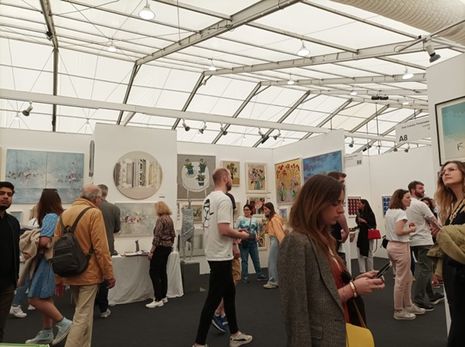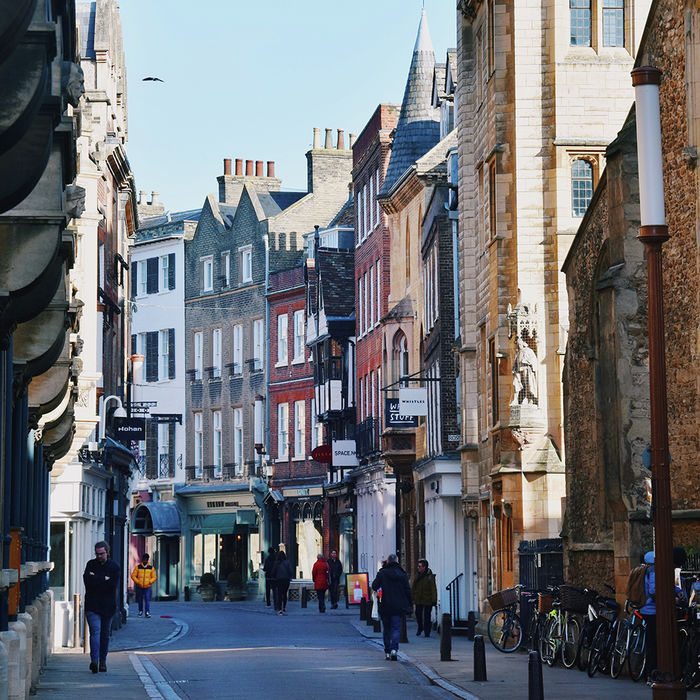Unpacking ‘affordable’ art
Arts Editor Zoe Zhang reflects on the futile search for sanity in the contemporary art market

May 9th, 2022 – on this day Andy Warhol’s Shot Sage Blue Marilyn was sold for $195 million. Never before had a work of 20th century art been sold for such an eye-wateringly high price. Although other pieces have sold for even higher prices, with the possibly misattributed Leonardo da Vinci painting Salvator Mundi selling for $450 million in 2017, this recent purchase remains emblematic of the dizzying heights which the art market occupies, and will likely continue to occupy, in the global economy.
“Oftentimes, the professionals themselves have no clue”
Whether these works of art actually deserve such economic acclaim is not a question that can be happily resolved by a single opinion. However, the squabbling of critics aside, the average person on the street would likely baulk at the prospect of works by these men selling for hundreds of millions of pounds more than those of forgotten contemporaries or modern imitators. Given a little more time, and perhaps a little more habituation-cum-indoctrination by way of heady doses of art history and an annual subscription to the Art Pass, some might change their minds, but the instinctual gulf between the artistic layman and the wealthy scions of the commercial art world is here to stay. To the untrained eye, there is no difference between a Rembrandt, a contemporary’s work, and a modern copy. Indeed, considering the controversy over whether Salvator Mundi is a genuine Leonardo or not, it seems that oftentimes, the professionals themselves have no clue either.
Private jets and lavish mansions are out of the grasp of the masses, but they are readily and easily understood as such, even if this understanding is often shot through with resentment. On the other hand, the contemporary art market is not just a rich man’s playground, but a wholly incomprehensible one. And when the professionals themselves seem unable to navigate it, what remains?
Enter the Affordable Art Fair, taking shape in cities around the globe year-round to give to the average person the ability to play commercial art dealer and art historian in one. The works of world-deceased famous artists have their values determined by an opaque conversation between buyers of abnormal means and largely incomprehensible critical verdicts, but the prices of the works at the Fair lie within the much more widely accessible range of £50-£7500. Here, then, we find art valuated with an eye to the depths of the pockets of ordinary people, making itself accessible at prices comparable to a night out or even a Ryanair-enabled weekend city break. It is a contemporary art fair too, only selling pieces from living artists currently exhibiting at galleries across the world. Although the artist plaques at the Fair’s visit to Hampstead (which I visited the day before the sale of Shot Sage Blue Marilyn) loudly parroted critical acclaim where they could, none of the names appended were ‘big names’ in the parlance of the global market. One can hardly imagine that the opinions of the ‘big’ critics held much weight there.
“The Fair revealed itself to be as anarchic and chaotic as the global art market”
But there was still something sucking money out of buyers’ products, despite the absence of critics’ judgements squeezing money out of the world’s richest auction-house goers via the piquing of mutual desire – or delusion, depending on how you look at things. There had to be something in the intervening gap between the £50 “nice meal” and the £7500 “year of tuition fees”, and it didn’t seem to be simple physical effort or time spent in every case, at least from what I could see. No – it was the artists’ own estimations of the worth of the subjective intentions contained within their works.
It was at the juncture of this realisation that the Fair revealed itself to be as anarchic and chaotic as the global art market. Did insincerity lie with the lowest-valuating artists, seeking to undercut the market and sweep up those looking for a bargain through deliberate under-valuation? Or did it lie in the realm of the high thousands, with canny artists attempting to make a single big kill out of a buyer of the mindset that the most expensive work of art at the Fair had to be manifestly better than the others, thereby giving them taste and sophistication by proxy? Of course, in both scenarios, we find reliance upon the putative presence of buyers locating the worth of art in something else other than their comprehension of the artist’s intentions, whether in a symbolic or aesthetic sense. So much for the Fair’s seeming demystification of the art market, then – in reality, it was swarming just as densely with scheming and mystique as a top auction house.
 News / Cambridge academics stand out in King’s 2026 Honours List2 January 2026
News / Cambridge academics stand out in King’s 2026 Honours List2 January 2026 Interviews / You don’t need to peak at Cambridge, says Robin Harding31 December 2025
Interviews / You don’t need to peak at Cambridge, says Robin Harding31 December 2025 News / AstraZeneca sues for £32 million over faulty construction at Cambridge Campus31 December 2025
News / AstraZeneca sues for £32 million over faulty construction at Cambridge Campus31 December 2025 Comment / Plastic pubs: the problem with Cambridge alehouses 5 January 2026
Comment / Plastic pubs: the problem with Cambridge alehouses 5 January 2026 News / Cambridge businesses concerned infrastructure delays will hurt growth5 January 2026
News / Cambridge businesses concerned infrastructure delays will hurt growth5 January 2026








